Curious about the electrifying world of parkour? In this post, we delve into the heart-pounding realm of parkour, exploring its origins, defining characteristics, and its undeniable allure. Whether you’re a newcomer intrigued by the art of movement or a seasoned practitioner seeking deeper insights, join us on a journey to uncover the essence of parkour and the boundless potential it holds.
What is Parkour?
Parkour, widely regarded as one of the most dynamic urban sports globally, encapsulates an exhilarating fusion of athleticism and creativity. At its core, parkour is a multifaceted discipline wherein practitioners harness a blend of agility, strength, and mental acuity to defy conventional limitations imposed by gravity and terrain. Beyond mere athleticism, parkour embodies a holistic approach to physical education and lifestyle, advocating for the mastery of movement and the cultivation of adaptability in navigating the complex urban landscape. Through fluid sequences of running, jumping, climbing, and intricate maneuvers, practitioners of parkour strive to transcend barriers and seamlessly traverse from one point to another amidst the bustling backdrop of cityscapes. In essence, parkour is not merely a sport but a profound expression of human ingenuity and resilience in the face of urban challenges.
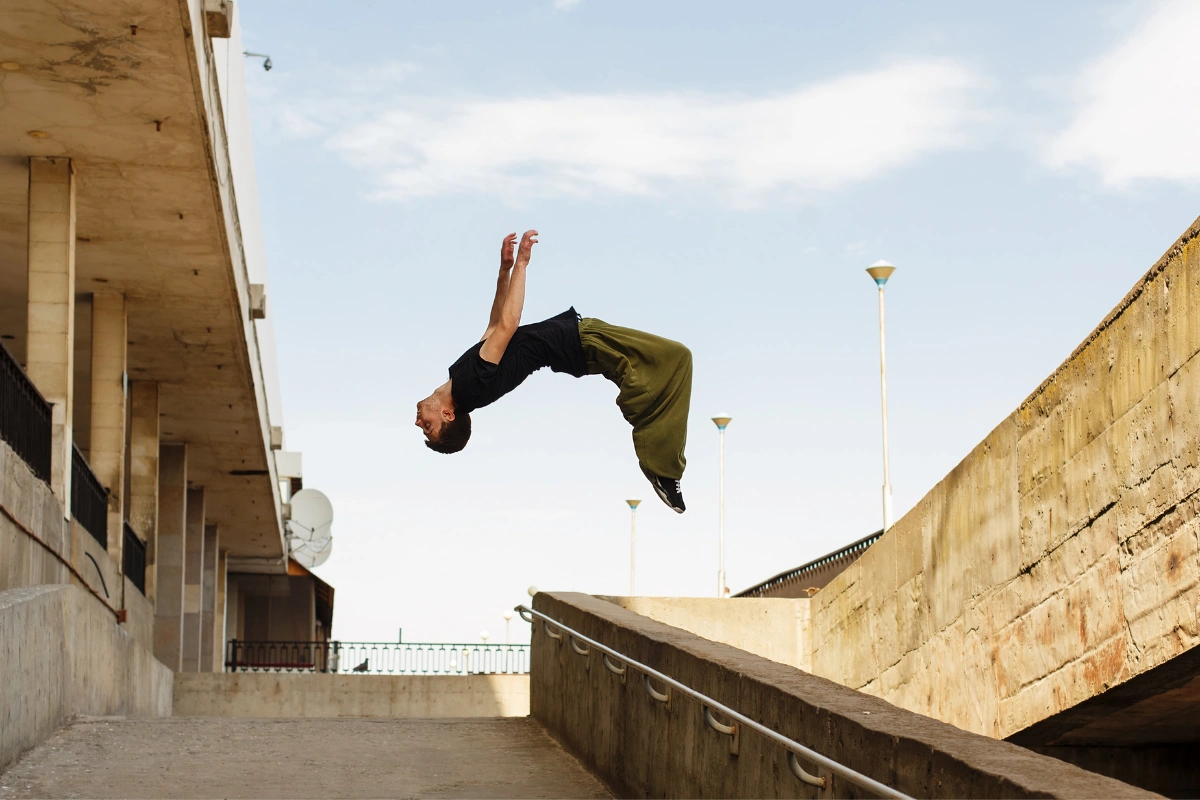
Historical Origins of it
The historical roots of it trace back to the late 1980s in France, where Raymond Belle pioneered its practice. Raymond’s son, David Belle, along with a close-knit group of enthusiasts, further refined and popularized the discipline. This core group, including David Belle, continued to innovate and evolve parkour, eventually founding the renowned collective known as Yamakasi in 1997. The seminal 2001 film bearing the same name served as a catalyst for its global recognition, propelling it into mainstream consciousness.
Within the parkour community, practitioners are respectfully referred to as Traceurs and Traceuses, denoting individuals who trace or navigate their environments with precision and agility. Originally termed “l’art du déplacement” (the art of movement), this dynamic discipline underwent a rebranding to its now-familiar moniker, Parkour. This transformation reflects its evolution from a niche pursuit to a widely recognized modern urban sport.
In recent years, it has garnered support from prominent sports brands, further solidifying its position in the athletic landscape. Its inclusion in action movies has also contributed to its visibility, with breathtaking displays of athleticism captivating audiences worldwide. As a testament to its enduring appeal, parkour continues to captivate enthusiasts and inspire a new generation of urban athletes.
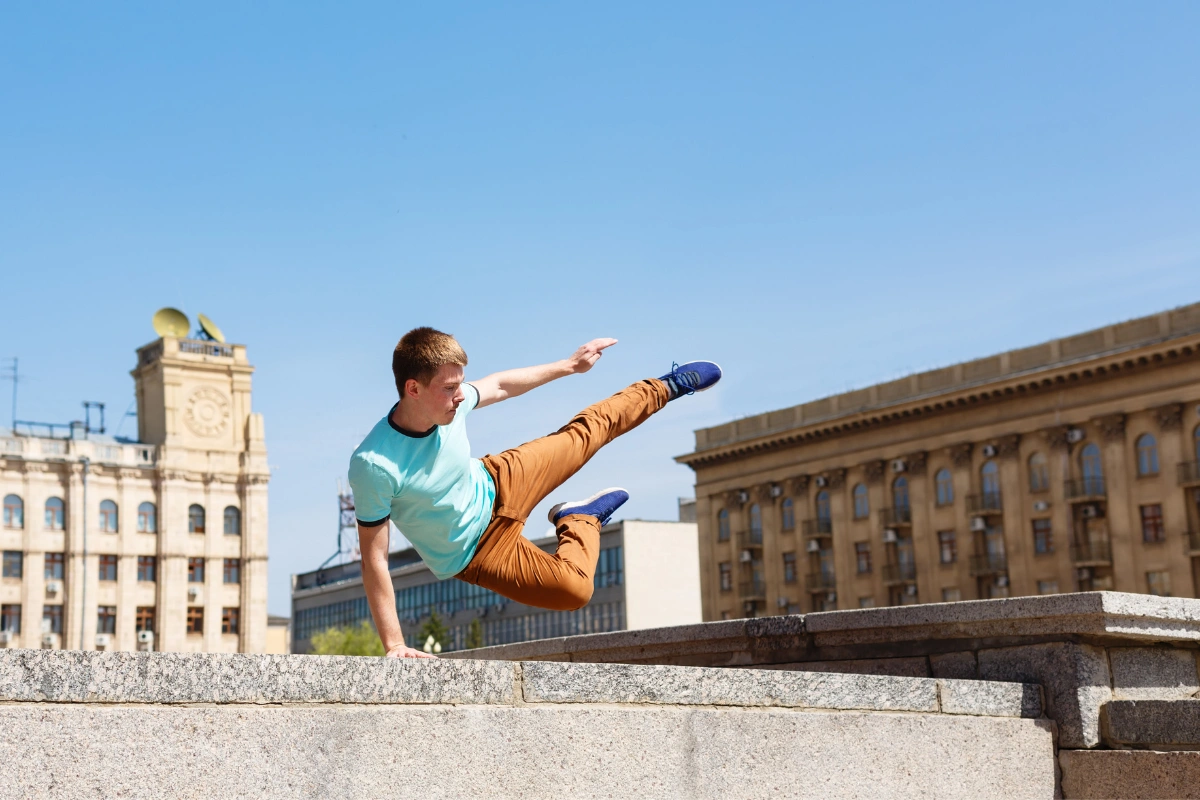
How to do it?
Mastering parkour entails a journey of self-discovery and physical conditioning, with no need for specialized equipment but rather a commitment to utilizing one’s own body with determination, discipline, and intuition. To embark on this journey, one must seek out suitable environments, whether outdoor spaces or designated parkour facilities, where techniques and movements can be practiced and honed.
A fundamental aspect of parkour training involves strengthening the body and cultivating balance. Daily exercises such as push-ups, pull-ups, and squats are essential for building the necessary muscle and stability required for executing parkour maneuvers effectively. Additionally, having a knowledgeable coach by your side can expedite the learning process and ensure proper form and technique.
The progression in parkour training typically begins with mastering landing and rolling techniques. Starting with jumps from modest heights—ranging from half a meter to a meter—you can gradually familiarize yourself with the mechanics of safe landings and fluid rolling motions. As proficiency improves, one can then advance to more intricate movements, including vaulting, jumping, and climbing.
As you refine your skills, it’s essential to cultivate your unique style by exploring and adapting movements that resonate with your body and capabilities. Regular training sessions and experimentation in diverse environments will facilitate the development of a personalized approach to parkour.
Beyond individual practice, engaging with a community of fellow practitioners can enhance both enjoyment and learning. Whether through organized groups or impromptu gatherings at outdoor parkour spots or indoor facilities, the camaraderie and exchange of knowledge among peers can accelerate skill development and foster a deeper appreciation for the sport.
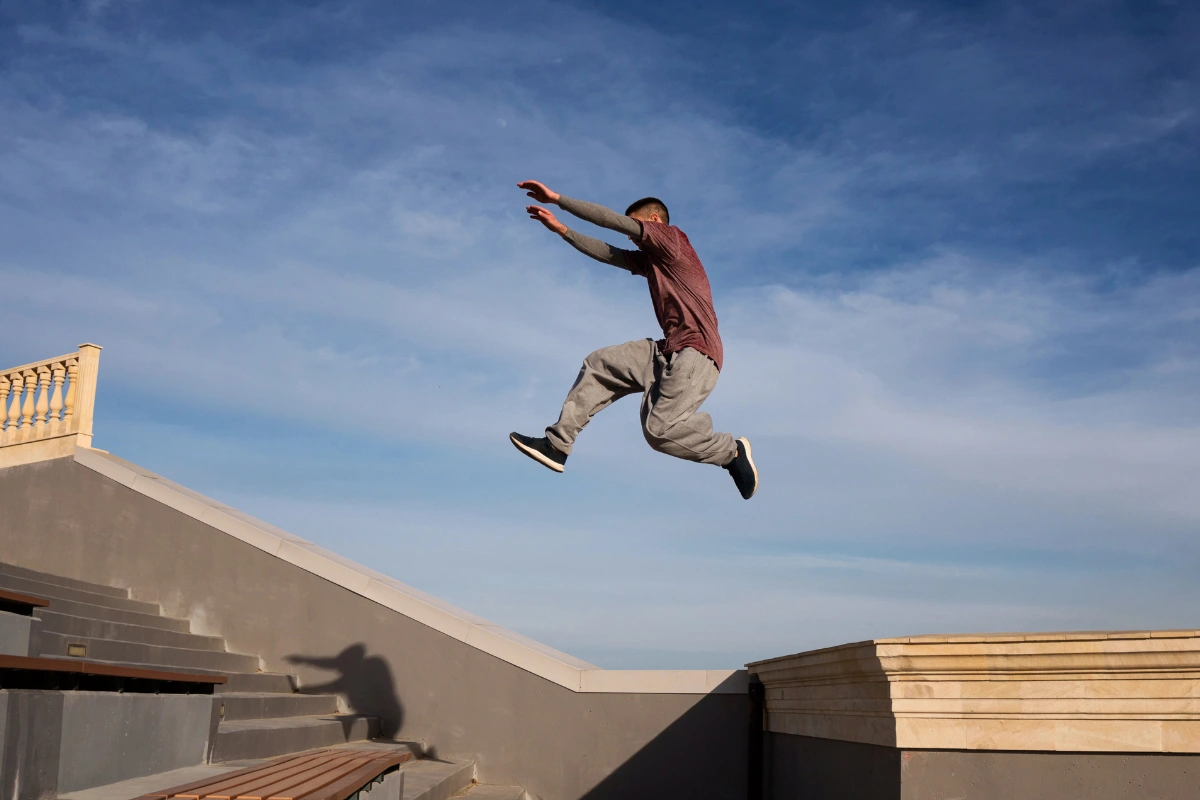
What Equipment is Needed for Parkour?
Parkour Clothing
When it comes to parkour, the necessity for equipment is minimal, emphasizing the freedom of movement and agility inherent to the discipline. While a comprehensive kit may not exist, selecting appropriate attire and footwear is paramount to ensuring safety, comfort, and performance.
Parkour clothing should prioritize flexibility and durability to withstand the rigors of dynamic movement. Opting for sportswear that allows for unrestricted mobility, such as moisture-wicking fabrics and stretchable materials, is essential. A tracksuit that offers both comfort and freedom of movement without hindering agility is a popular choice among practitioners. Additionally, garments that stay securely in place during vigorous activity are preferable, minimizing distractions and maximizing focus.
Selecting the right footwear is perhaps the most critical decision for parkour enthusiasts. The ideal shoe strikes a delicate balance between cushioning, traction, and support. A lightweight design with ample cushioning provides shock absorption for landings and impacts, reducing the risk of injury. Meanwhile, a grippy outsole with sufficient traction ensures stability and confidence during climbs, jumps, and landings on various surfaces. Factors such as sole thickness, flexibility, and ankle support should be considered based on individual preferences and the demands of one’s training environment.
Furthermore, accessories such as gloves can offer added grip and protection for hands during maneuvers involving surfaces like railings or walls. However, their usage is subjective and may vary depending on personal preference and training objectives.
While the equipment list for parkour may be sparse compared to other sports, the importance of selecting suitable attire and footwear cannot be overstated. By prioritizing comfort, safety, and performance, practitioners can optimize their training experience and unlock their full potential in the dynamic world of parkour.
Parkour Shoes
When delving into the realm of parkour, the significance of footwear cannot be overstated, as it serves as the foundation for every leap, bound, and landing. Parkour shoes, in particular, play a pivotal role in facilitating optimal performance, comfort, and safety during training and practice sessions.
A paramount feature of parkour footwear is its blend of sturdiness and flexibility, striking a delicate balance between resilience and agility. A robust yet pliable construction allows for dynamic movement while providing ample protection against impact and abrasion. Lightweight materials further enhance agility and responsiveness, enabling practitioners to fluidly navigate their surroundings with precision and confidence.
The shock-absorbing properties of shoes are indispensable for cushioning landings and mitigating the strain on foot and leg joints. By attenuating the impact of each stride, these shoes help minimize the risk of overuse injuries and promote long-term joint health. Moreover, they afford wearers the tactile sensitivity needed to discern the texture and firmness of surfaces, facilitating precise foot placement and enhancing overall control.
Investing in high-quality shoes is paramount, as superior craftsmanship and materials translate into enhanced durability and performance. By prioritizing durability, practitioners can minimize the frequency of shoe replacements and enjoy sustained support and protection throughout their training journey.
Furthermore, proper fit is essential to maximize comfort and functionality. Parkour shoes should provide a snug yet comfortable fit, with ample room for toe splay and minimal slippage to ensure stability and control. Avoiding excessively tight footwear is crucial to preventing discomfort and circulation issues during prolonged periods of activity.
Parkour Gloves and Protective Wear
While parkour is predominantly characterized by the freedom of movement and the direct interaction of the body with the environment, there are instances where incorporating protective gear, albeit sparingly, can be beneficial, particularly for novice practitioners. While seasoned Traceurs and Traceuses typically advocate for a minimalist approach, recognizing the importance of tactile feedback and unencumbered mobility, beginners may find certain protective equipment, such as parkour gloves and additional padding, conducive to their learning and safety.
Parkour gloves, though not universally endorsed within the community, can offer a measure of protection for the hands without compromising dexterity. Initially, opting for fingerless gloves designed specifically for parkour enables individuals to maintain a degree of sensitivity and grip while shielding the palms from abrasions and impacts. The gloves should prioritize flexibility and comfort to facilitate fluid movement and ensure a secure grip on surfaces. Alternatively, climbing gloves, renowned for their durability and grip, may be considered as a viable option for parkour practitioners seeking enhanced hand protection.
In addition to gloves, supplementary protective wear such as elbow and knee pads can provide added reassurance, particularly during the initial stages of training when falls and impacts are more frequent. These pads offer cushioning and impact absorption, reducing the risk of bruises, scrapes, and joint injuries. While not indispensable for all practitioners, individuals who are prone to falls or those experimenting with more challenging maneuvers may find these protective measures invaluable in mitigating the potential for injury.
When is the Best Time for Parkour?
Determining the optimal timing for parkour largely depends on individual preferences, environmental conditions, and access to suitable training facilities. While parkour is a year-round activity, varying seasons can present unique challenges and opportunities for practitioners.
During warmer months, such as spring and summer, outdoor training sessions offer ideal conditions for parkour exploration. The mild weather and longer daylight hours provide ample opportunities to venture into urban landscapes, hone skills, and push personal boundaries. Additionally, the vibrant foliage and pleasant temperatures create an inviting backdrop for dynamic movement and creative expression.
Conversely, the winter season can pose additional obstacles for parkour enthusiasts. Cold temperatures, icy surfaces, and inclement weather conditions may limit outdoor training options and increase the risk of injury. However, indoor parkour facilities, such as gyms or specialized training centers, offer a safe and controlled environment for maintaining skills and conditioning during colder months. These indoor venues provide shelter from harsh weather conditions while still allowing for rigorous training and skill development.
Moreover, the burgeoning popularity of parkour has led to its inclusion in various sports festivals and community events worldwide. These gatherings offer unique opportunities for practitioners to come together, exchange knowledge, and showcase their skills in a supportive and collaborative environment. Participating in such festivals not only fosters camaraderie but also provides valuable insights and inspiration for personal growth and improvement.
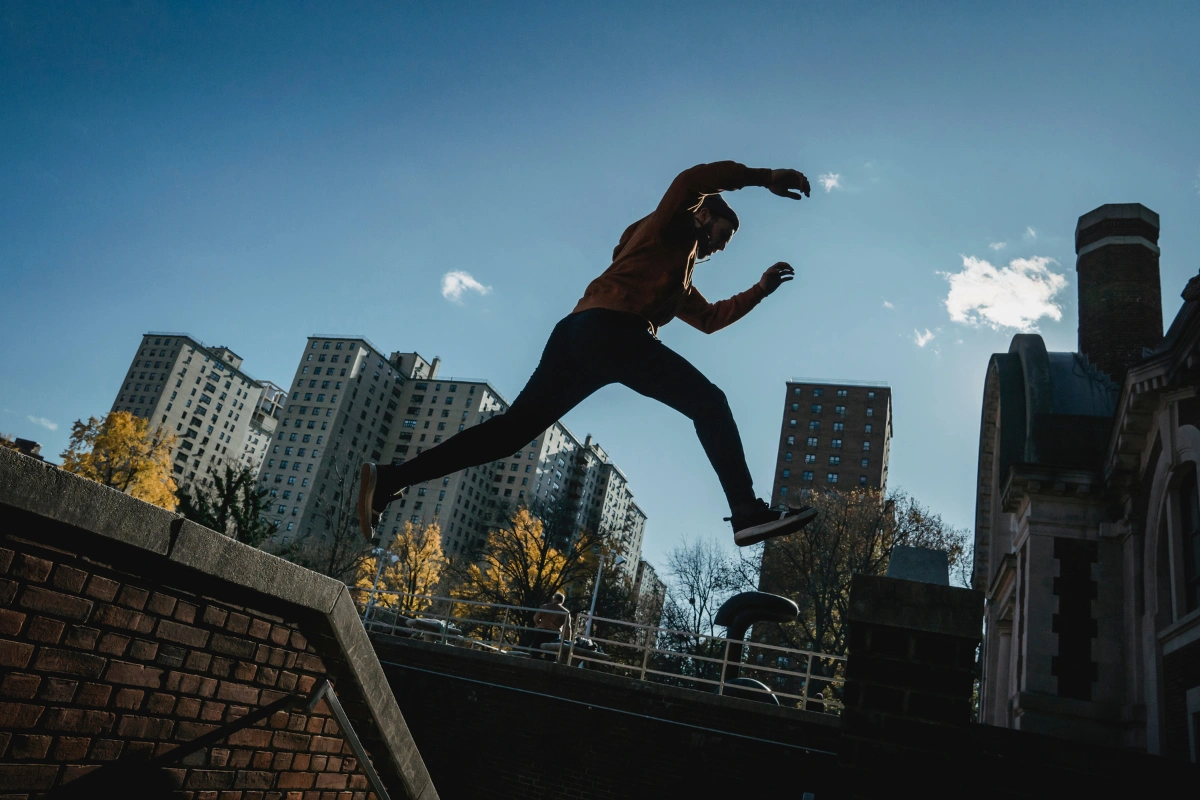
Summary
Parkour, the exhilarating urban sport born from the streets of France, captivates enthusiasts worldwide with its blend of athleticism, creativity, and daring exploration. Rooted in the ethos of overcoming obstacles with fluid movement and precision, parkour transcends mere physical activity to embody a holistic philosophy of adaptability and resilience. In this exploration, we unravel the essence of parkour, tracing its historical origins, examining its core principles, and delving into its profound impact on both individuals and communities. Whether you’re a novice intrigued by its allure or a seasoned practitioner seeking deeper insights, prepare to be inspired by the dynamic world of parkour.

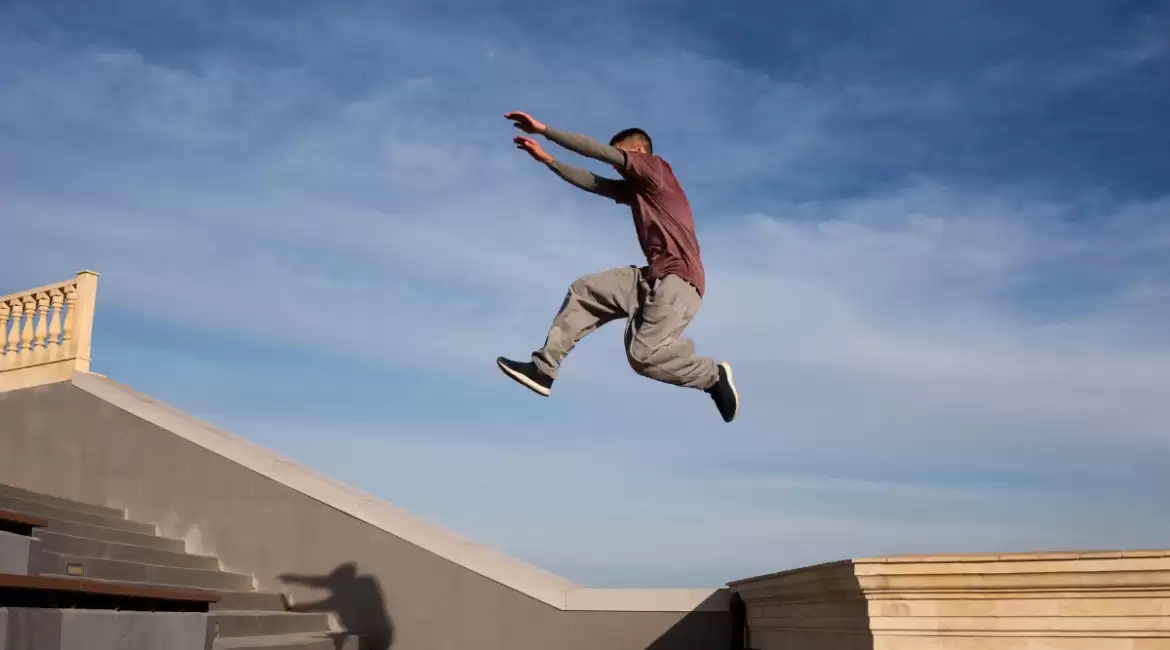
Leave a reply